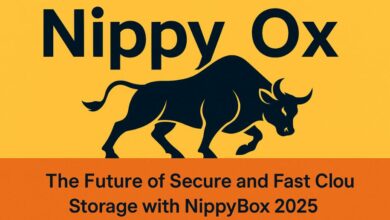SOA OS23: Redefining Digital Architecture for the AI and Cloud Era

In the rapidly evolving digital landscape of 2025, traditional software architectures are no longer sufficient to support the scale, complexity, and intelligence of modern systems. SOA OS23 emerges as a pioneering framework that reshapes Service-Oriented Architecture (SOA) by integrating artificial intelligence, semantic interoperability, real-time governance, and contextual adaptability.
Originally introduced as a strategic response to the shortcomings of legacy SOA systems, SOA OS23 builds a new paradigm tailored for cloud-native, edge-driven, and AI-augmented environments. This article explores every facet of SOA OS23—from its core principles to its real-world applications.
What is SOA OS23?
SOA OS23 stands for Service-Oriented Architecture Operating Standard 2023. It is not a piece of software but a modular and dynamic system design framework that serves as an evolution of classical SOA.
SOA OS23 enables the creation of loosely coupled, semantically aware services that communicate intelligently, adhere to embedded policies, and offer real-time adaptability in distributed ecosystems. It modernizes the SOA approach to suit emerging demands in areas like healthcare, smart cities, cloud platforms, and AI-driven services.
The Evolution from Traditional SOA
| Feature | Traditional SOA | SOA OS23 |
|---|---|---|
| Communication Protocols | SOAP/XML | REST/JSON, gRPC, semantic messaging |
| Focus | Siloed enterprise services | Distributed, intelligent, event-driven |
| Governance | External audit layers | Built-in compliance and policy enforcement |
| Scalability | Limited to enterprise scale | Cloud-native and edge-ready |
| AI and Learning Integration | Absent or external | Embedded within service logic |
SOA OS23 acknowledges the limitations of earlier SOA designs and reinvents the model using next-generation technologies and standards.
Core Principles of SOA OS23
1. Modularity and Loose Coupling
SOA OS23 structures systems into independent, interchangeable modules that can be deployed, scaled, and replaced without disrupting the ecosystem.
2. Context-Aware Interactions
Services respond not just to requests but to context—user behavior, device state, real-time location, and regulatory constraints all shape the outcome.
3. Event-Driven Design
Instead of passive service calls, SOA OS23 promotes an event-driven architecture where components emit and react to signals asynchronously.
4. Semantic Interoperability
Data shared between services is processed using semantic protocols, allowing for better integration of heterogeneous systems with differing formats, schemas, or languages.
5. Built-In Governance
Regulatory compliance, ethical constraints, and operational policies are embedded directly into the service lifecycle—from data processing to service orchestration.
6. AI-Ready Service Logic
Each service in SOA OS23 can host machine learning models, making the architecture inherently adaptive and self-optimizing.
Architectural Components of SOA OS23
A. Semantic Service Mesh
A backbone layer that facilitates intelligent message routing between services. It decouples communication and understands the “meaning” behind data packets.
B. Contextual Policy Engine
Dynamic rulesets that define how services behave under varying scenarios. These engines enforce security, legal, ethical, and operational policies in real time.
C. Audit and Trace Layer
Structured logging, forensic diagnostics, and explainability modules are baked into the architecture to ensure transparency and trust.
D. Containerized Microservices
Services in SOA OS23 are often deployed in containers or virtualized environments, promoting scalability, resilience, and fault isolation.
E. Human-in-the-Loop Modules
For decision-making that involves ethics or safety, SOA OS23 supports human intervention checkpoints where necessary.
Advantages of SOA OS23
-
Enhanced Scalability: Designed to handle millions of interactions in distributed cloud environments.
-
Real-Time Compliance: Services self-audit and auto-correct violations based on jurisdiction-specific rules.
-
Greater Resilience: Failures are localized; systems self-heal and re-route traffic.
-
Future-Proofing: AI-readiness, edge compatibility, and semantic understanding make it adaptable to emerging technologies.
-
Improved Interoperability: Diverse systems (legacy, IoT, cloud) can integrate using semantic translation and protocol negotiation.
Applications and Use Cases
1. Smart Cities
Traffic management, utilities, and emergency systems operate as a network of intelligent services that coordinate using real-time data and adaptive logic.
2. Healthcare Platforms
SOA OS23 enables secure exchange of patient data across hospitals, labs, insurance platforms, and AI diagnostics while ensuring HIPAA or GDPR compliance.
3. Cloud Platforms
SaaS providers use SOA OS23 to create modular offerings that scale independently, support custom compliance needs, and learn from user interactions.
4. Autonomous Systems
From drones to autonomous vehicles, SOA OS23 supports context-sensitive and regulation-aware service coordination.
5. Financial Systems
Supports real-time fraud detection, risk management, and cross-platform banking operations with complete transparency and auditability.
Comparing SOA OS23 with Microservices
Though often mentioned in the same breath, microservices and SOA OS23 differ fundamentally:
| Attribute | Microservices | SOA OS23 |
|---|---|---|
| Granularity | Ultra-fine | Moderate to coarse-grained modularity |
| Communication | Lightweight (REST, gRPC) | Semantic, policy-driven messaging |
| Governance | External | Integrated into service fabric |
| Discovery | Static or simple dynamic | Semantic and context-aware |
| AI Integration | Manual or external | Embedded and service-native |
SOA OS23 is a super-architecture that can contain or orchestrate microservices, but with broader oversight and intelligence.
Challenges and Considerations
A. Complex Initial Setup
Due to its depth, SOA OS23 requires careful architectural planning and infrastructure readiness.
B. Skilled Workforce
Teams need training in AI ethics, semantic modeling, policy engineering, and distributed systems.
C. Performance Overhead
Semantic processing and real-time policy enforcement can introduce latency if not optimized properly.
D. Security Layers
While governance is embedded, security in distributed systems still needs zero-trust frameworks and encryption at every layer.
Industry Adoption and Roadmap
As of 2025, SOA OS23 is being adopted by:
-
Government agencies for digital transformation
-
Major cloud service providers
-
Medtech and healthtech startups
-
AI-driven enterprises needing scalable, policy-compliant infrastructures
Future enhancements in the SOA OS23 roadmap include:
-
Quantum-resilient cryptographic modules
-
Federated learning integration
-
Emotionally intelligent human-in-loop interfaces
-
Augmented reality-enabled services
SOA OS23 vs Legacy Middleware
Many enterprises transitioning from legacy systems (like ESBs or message queues) find SOA OS23 to be a complete reimagining. Instead of bolting on rules and monitoring after the fact, the architecture is compliance-native, adaptive by default, and intelligence-centric.
This shift saves time, reduces system entropy, and promotes systemic accountability.
The Future of SOA OS23
As AI regulations become global, and systems grow more autonomous, the demand for self-explaining, policy-respecting architectures will soar. SOA OS23 positions itself as the blueprint for ethical and resilient digital ecosystems, not just technically but socially and legally.
It enables a world where services are smart, responsible, and always evolving—aligned with business goals, societal expectations, and global standards.
Conclusion
SOA OS23 is not just an upgrade to an old standard—it’s a reinvention of how we think about system design in a world that is interconnected, intelligent, and ethically demanding. From smart cities to AI operations, it delivers the tools, language, and structure to build truly future-ready systems.
Whether you are an architect, developer, policymaker, or business strategist, SOA OS23 offers a framework that balances performance, compliance, and innovation.
For more insights on advanced digital frameworks and architecture standards, stay connected with Trend Loop 360.
For more technology aticles visit technology section.



